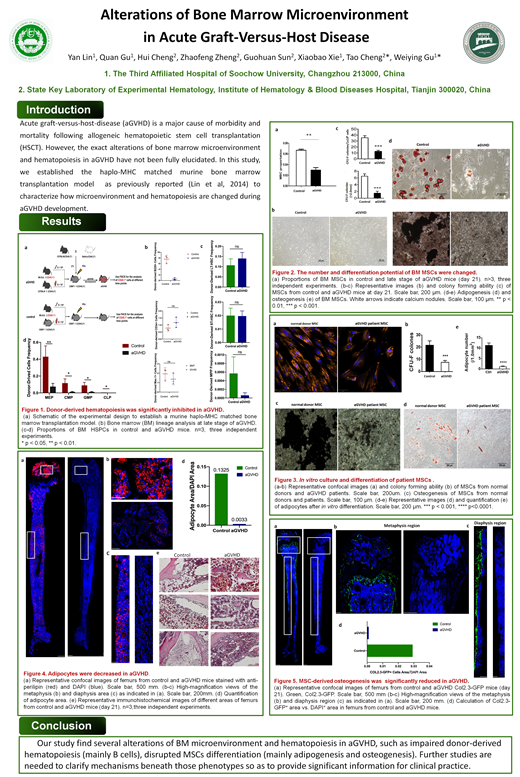Severe acute graft-versus-host disease (aGVHD) indicates a poor prognosis after allogeneic hematopoietic stem cell transplantation. In our previous study, we found that hematopoiesis was progressively suppressed during aGVHD, while the hematopoietic regenerative potential of donor-derived hematopoietic stem cells remains intact. It prompts us to investigate whether bone marrow niche is a major target of GVHD. We addressed this issue by studying the critical components in bone marrow microenvironment, including mesenchymal stem cell (MSC), osteoblasts and adipocytes in haplo-MHC-matched murine bone marrow transplantation model. By comparing confocal images of femurs from control and aGVHD SCF-GFP mice or Col2.3-GFP mice, we found that both MSCs and osteoblasts were significantly reduced during aGVHD development. In addition, anti-perilipin staining showed that adipocytes were also decreased in aGVHD mice. We found a defect in the differentiation potential of MSCs from aGVHD niche by in vitro culture of both murine and human bone marrow niche cells. qRT-PCR showed decreased gene expressions of PPAR-gamma, Adipoq, Runx1 and Col2a1, suggesting the potential of MSCs differentiation into adipocytes and osteoblasts was blocked. These data provide new insights into the pathogenesis of aGVHD and may improve the clinical management of aGVHD.
No relevant conflicts of interest to declare.
Author notes
Asterisk with author names denotes non-ASH members.


